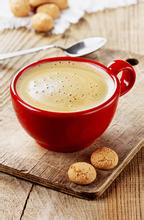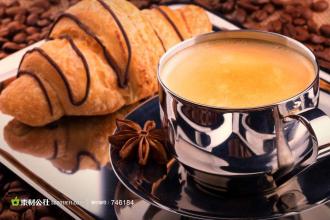Introduction to the flavor and taste characteristics of Hawaiian Kona coffee
The real Hawaiian Kona coffee makes people enjoy the unique pleasure and leads you slowly into the detached state of tasting coffee. And this comes entirely from the oldest Arabica coffee tree. Hawaii is the only state in the United States that grows coffee, which is grown on the five major islands of the Hawaiian Islands: Oahu, Hawaii, Maui, Kauai and Moroca. Coffee from different islands also has its own characteristics. Kauai coffee is soft and smooth, Muroca coffee is high in mellow and low acidity, and Maui coffee is moderately acidic but has the strongest flavor. Hawaiians are extremely proud of the Arabica coffee beans they grow 100% home-grown. [1]
Hawaii is the largest island in the Hawaiian archipelago, so it is also called the theBigIsland. Kona Coffee is produced in the west and south of the Kona region of Hawaii. Coffee trees are scattered on the slopes of Hualalai and MaunaLoa, which is 150m to 750m above sea level, which is suitable for coffee growth.
Climatic conditions editor
The excellent quality of Kona coffee benefits from the suitable geographical location and climate. Coffee trees grow on the slopes of volcanoes, and their geographical location ensures the altitude needed for coffee growth; the dark volcanic ash soil provides the minerals needed for coffee growth. The climatic conditions are very suitable. In the morning, the sun gently passes through the air full of water vapor. In the afternoon, the mountains will become more humid and foggy, and the white clouds surging in the air are natural umbrellas for coffee trees. And the evening will become sunny and cool, but there is no Frosts Descent. Because of the suitable natural conditions, the average yield of Kona coffee is very high, reaching 2240 kg per hectare, while in Latin America, the yield of coffee per hectare is only 600kg ~ 900kg.
Planting history editor
In 1813, a Spaniard first grew coffee in the ManoaValley Valley of Oahu, which is today the main campus of the University of Hawaii. In 1825, an English agronomist named John Wilkinson transplanted some coffee from Brazil to grow in the coffee garden of Chief Birch on the island of Oahu. Three years later, an American missionary named Samuel Riveland Rags brought the branches of the coffee tree from Birch Emirates Garden to Kona, a descendant of the Arabica coffee tree that first grew on the Ethiopian plateau. To this day, Kona Coffee still carries on its noble and ancient lineage.
The earliest coffee cultivation in Hawaii had adopted the model of large-scale coffee plantations, and at that time, coffee had not yet become a widely grown crop in the world, and the production and sale of Kona coffee had experienced several ups and downs. After the outbreak of World War I, the demand for coffee increased sharply, and the government bought a lot of coffee for soldiers in order to maintain their combat ability. the rise in demand led to a rise in prices, and Kona coffee was no exception. The period from the outbreak of World War I to 1928 was the golden age of Kona Coffee. But the Great Depression that followed dealt a heavy blow to Kona Coffee. In 1940, the second World War caused the price of coffee to rise again. In order to avoid excessive price increases, the US government set a price cap for coffee. Even so, coffee farmers in Hawaii got a lot of benefits. During this period, their means of transportation for transporting coffee fruits were all replaced by donkeys and jeeps. In the 1970s and 1980s, the price of Kona Coffee experienced several ups and downs, but it was from this period that Kona Coffee established itself as the top coffee in the world. Even though Kona Coffee has been famous all over the world, its production remains relatively low.
Kona coffee has been grown in Kona since the early 19th century, and it has never been interrupted, and only the coffee produced here can be called "Hawaiian Kona". The raw beans of Hawaiian Kona Coffee are usually 100 packages of individual coffee beans. Kona coffee beans are also often used to make mixed coffee along with coffee beans from other parts of the world. Kona coffee beans mixed with other beans are marked with "Kona mixed beans (KonaBlend)" on the package. unfortunately, the content of Kona beans in these mixed beans may be very low, and the minimum content of Kona beans in Hawaii that can use the "Kona" label is only 10%. So, if you're not in Kona in Hawaii, it's hard to have 100% Kona coffee beans.

Important Notice :
前街咖啡 FrontStreet Coffee has moved to new addredd:
FrontStreet Coffee Address: 315,Donghua East Road,GuangZhou
Tel:020 38364473
- Prev

Boutique coffee introduction to Malaba Coffee from Rwanda Coffee producing countries
The first problem for Malaba coffee farmers is to set up a cleaning station. The coffee fruit must be transported to the cleaning station to wash the sugar under the skin of the coffee bean within 12 hours after picking, otherwise the flavor of the coffee will be greatly damaged. In July 2001, with UNR, the Ministry of Culture and Industry of Rwanda (Office des Cultures Industrielles du Rwanda,OCIR-Caf), ACD
- Next

An introduction to Sumatra Coffee Manor, a boutique coffee bean producing area in Ethiopia
Growing in western Ethiopia, 4900-5900 feet (Wollega province) plateau, north of Jima, mostly wild, annual output is about 500000bags/60kg, export is mostly G5/G4, bean body is larger and longer than Longberry, a little brown in green, taste similar to less jasmine tea, more bitter, lack of rising Hara, slightly sour, slightly fruity and wine aroma, but slightly inferior to Hara.
Related
- Detailed explanation of Jadeite planting Land in Panamanian Jadeite Manor introduction to the grading system of Jadeite competitive bidding, Red bid, Green bid and Rose Summer
- Story of Coffee planting in Brenka region of Costa Rica Stonehenge Manor anaerobic heavy honey treatment of flavor mouth
- What's on the barrel of Blue Mountain Coffee beans?
- Can American coffee also pull flowers? How to use hot American style to pull out a good-looking pattern?
- Can you make a cold extract with coffee beans? What is the right proportion for cold-extracted coffee formula?
- Indonesian PWN Gold Mandrine Coffee Origin Features Flavor How to Chong? Mandolin coffee is American.
- A brief introduction to the flavor characteristics of Brazilian yellow bourbon coffee beans
- What is the effect of different water quality on the flavor of cold-extracted coffee? What kind of water is best for brewing coffee?
- Why do you think of Rose Summer whenever you mention Panamanian coffee?
- Introduction to the characteristics of authentic blue mountain coffee bean producing areas? What is the CIB Coffee Authority in Jamaica?

